Welcome back to our exciting journey through the circular economy. In Part 1, we explored its foundational principles and the benefits it brings to our planet and society. Now, let’s delve deeper, examining the driving forces behind this transformative movement: impactful policies, global collaboration, and groundbreaking case studies that showcase the circular economy in action. Ready to discover how these elements are weaving a more sustainable future? Let’s dive in.
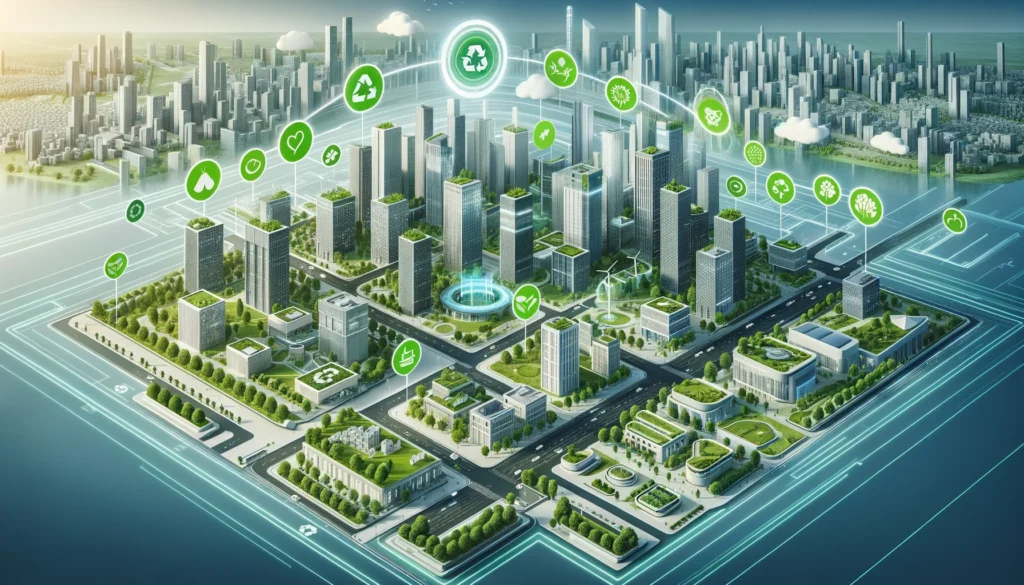 The Role of Policy and Regulation
The Role of Policy and Regulation
Creating a Framework for Change: Think of policies and regulations as the architects of the circular economy. Governments worldwide are setting the stage for a more sustainable future by enacting laws that promote recycling, encourage the design of long-lasting products, and support green innovation. These aren’t just suggestions; they’re powerful directives that compel businesses and consumers to adopt circular practices.
Spotlight on the EU’s Action Plan: The European Union is leading by example with its ambitious Circular Economy Action Plan. It’s a comprehensive strategy aiming to reduce waste and extend the lifecycle of products through innovative design and increased recycling efforts. This plan is not just reshaping consumption within the EU; it’s setting a global standard for environmental stewardship.
International Initiatives: Global Collaboration for Local Impact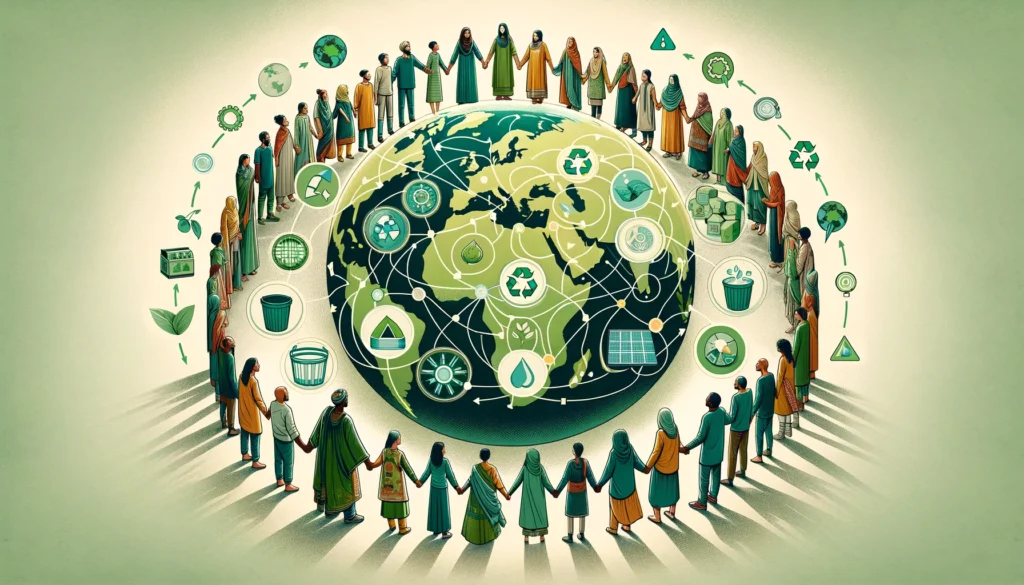
Uniting for a Sustainable World: The challenges of sustainability know no borders, making international cooperation essential. Through global initiatives, countries are pooling resources, knowledge, and technology to tackle environmental issues collectively. These collaborations are crucial in harmonizing standards, sharing best practices, and driving worldwide progress toward circularity.
Case Study: Global Commitment on Plastics: An exemplary initiative is the Ellen MacArthur Foundation’s Global Commitment to eliminate plastic waste and pollution. This agreement brings together governments, businesses, and other organizations in a unified effort to rethink and redesign the future of plastics, starting with packaging.
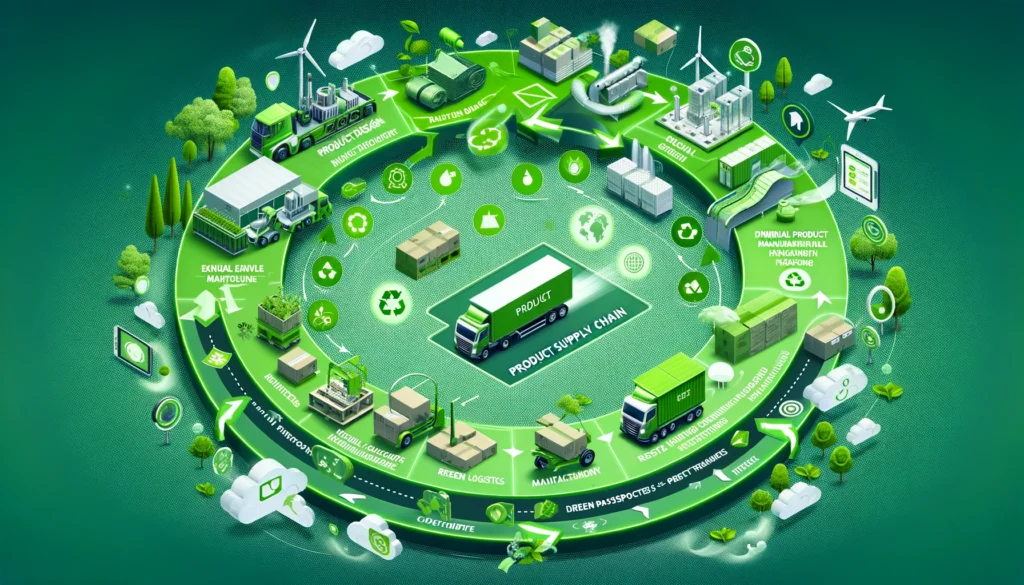 Advancing Trade and Supply Chains
Advancing Trade and Supply Chains
Revolutionizing Global Trade: The circular economy is dramatically transforming how we think about trade and supply chains. By prioritizing the exchange of services and sustainable goods, these networks are becoming more transparent, efficient, and, importantly, sustainable. This shift not only supports circular practices but also strengthens economic resilience by reducing dependency on finite resources.
Phoenix and Arizona State University Collaboration: A shining example of circular innovation is the partnership between the City of Phoenix and Arizona State University. This collaboration has led to significant advancements in waste diversion and the creation of a ‘Circular Living Lab’, driving both local and global circular economy initiatives. Their efforts demonstrate how municipal collaboration with educational institutions can catalyze meaningful environmental progress.
Technological Innovations: Engineering a Greener Future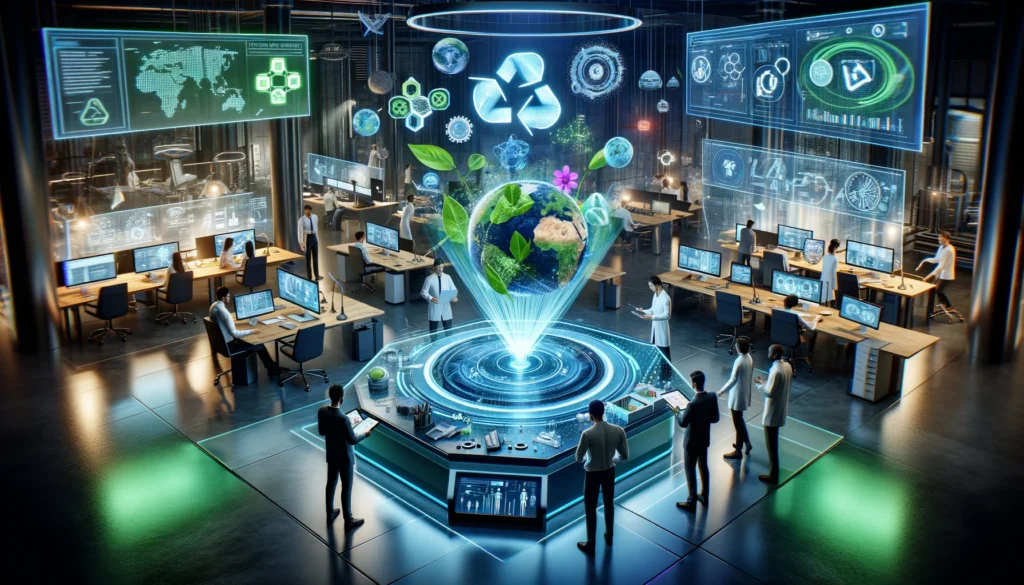
Innovations Driving Change: At the heart of the circular economy are groundbreaking technologies that make sustainable practices not only possible but profitable. From developing biodegradable materials to digital platforms that facilitate product sharing and reuse, technology is enabling us to close the loop on waste.
Toronto’s Circular Procurement: The City of Toronto’s adoption of a Circular Economy Procurement Implementation Plan showcases how leveraging technology and policy can transform municipal spending into a force for environmental good. By prioritizing circular outcomes in its procurement processes, Toronto is not just talking about change; it’s embedding sustainability into the very fabric of its operations.
Empowering Communities and Individuals
Your Role in this Global Movement: The circular economy thrives on participation from everyone. By choosing products designed for longevity, supporting brands committed to circular principles, and advocating for sustainable policies, each of us can contribute to this global shift. Remember, the power of collective action is immense, and together, we can drive the transition toward a circular and sustainable future.
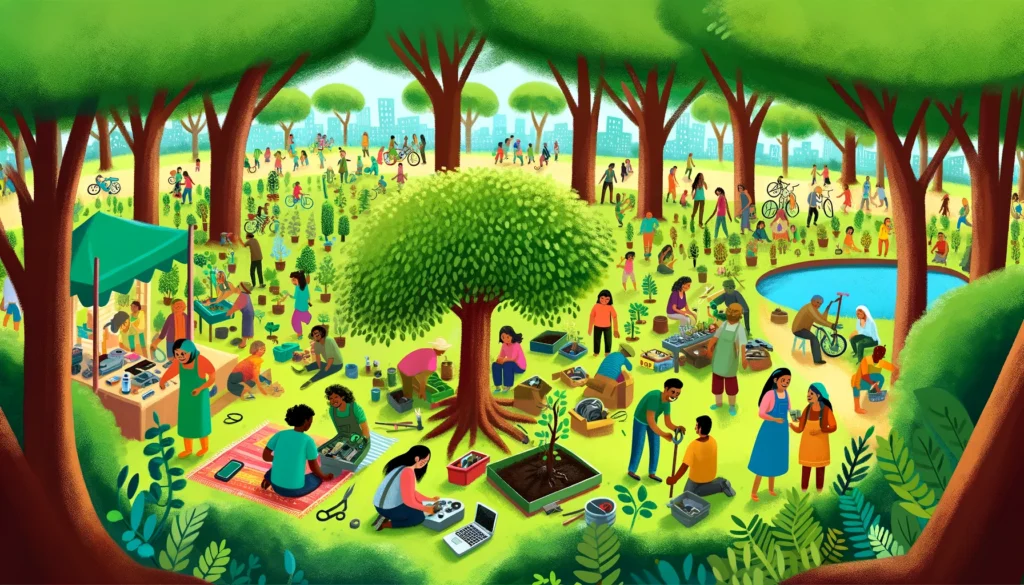 Conclusion
Conclusion
As we conclude our exploration of the circular economy’s next steps, it’s clear that the journey ahead is both exciting and essential. Through innovative policies, global collaboration, and the adoption of new technologies, we are paving the way for a future that respects and regenerates our natural world. The case studies highlighted here are just a few examples of what’s possible when we commit to circular principles.
Author’s Note:
Thank you for joining me on this deep dive into the circular economy. These stories of innovation, collaboration, and transformation are just the beginning. As we move forward, let’s carry the lessons learned and the inspiration gained into our communities and beyond. The shift to a circular economy is a collective endeavor, and every action, no matter how small, brings us closer to a sustainable future. Let’s continue this journey together, embracing the circular economy not just as an economic model, but as a blueprint for a better, more sustainable world.
G.C., Ecosociosphere contributor.
References:
- Circular economy introduction – By Ellen Macarthur Foundation
- What is a Circular Economy? – By EP
- What is circular economy and why does it matter? – By Climate Promise


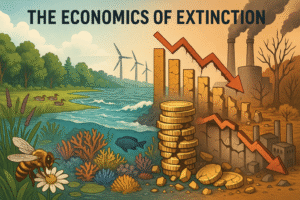


Comments
Thank you for your sharing. I am worried that I lack creative ideas. It is your article that makes me full of hope. Thank you. But, I have a question, can you help me?
Your point of view caught my eye and was very interesting. Thanks. I have a question for you.
Thank you for your sharing. I am worried that I lack creative ideas. It is your article that makes me full of hope. Thank you. But, I have a question, can you help me?
Thanks for sharing. I read many of your blog posts, cool, your blog is very good.